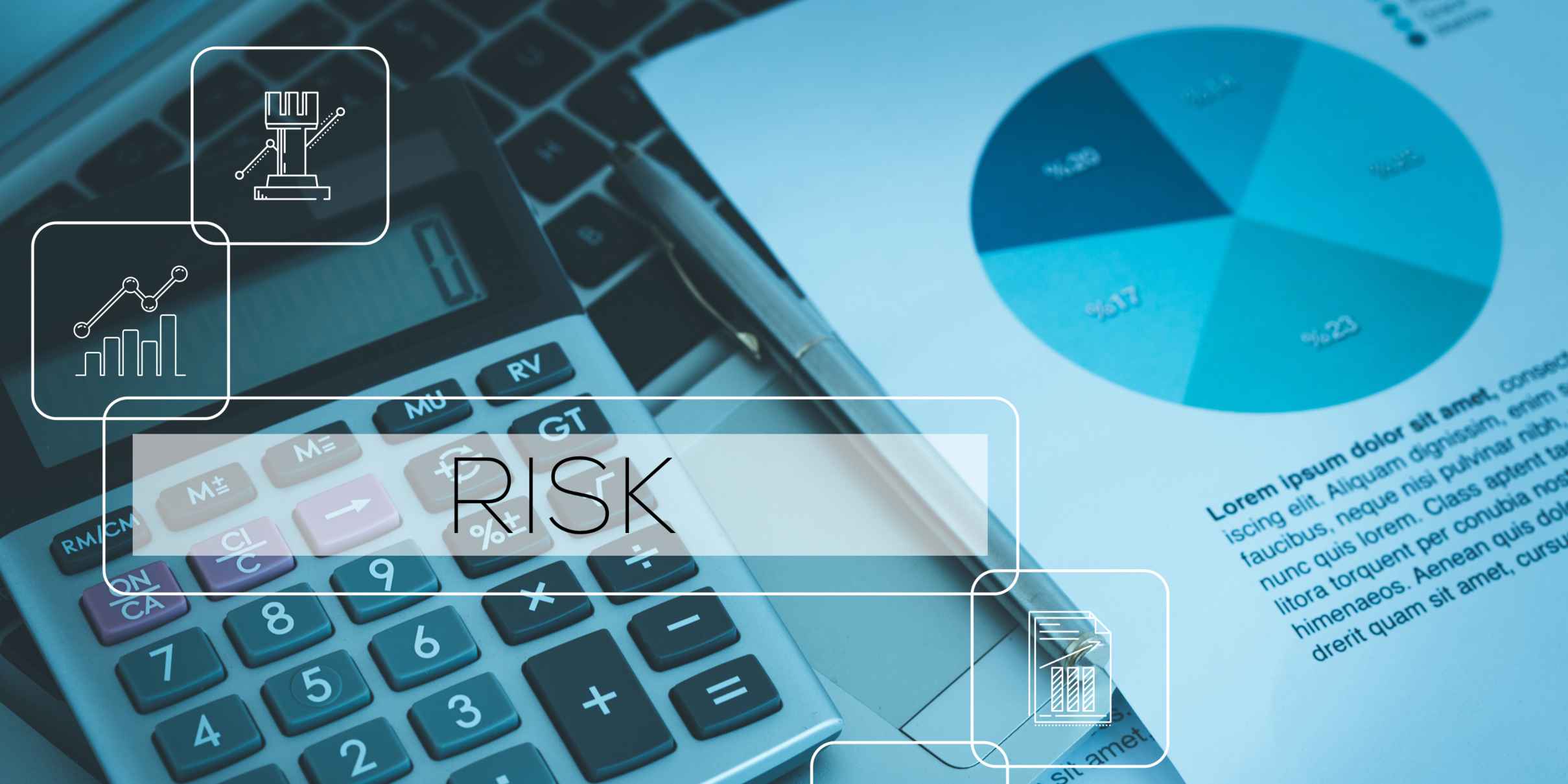Supplier risks are potential threats or vulnerabilities arising from your organization's dependence on external vendors, partners, and service providers. The main types include financial risks (such as vendor bankruptcy or credit issues), operational risks (production delays, quality problems), compliance and regulatory risks (legal violations), cybersecurity and data privacy risks (security breaches through third parties), and geopolitical/geographic risks (political instability, natural disasters). These risks can significantly impact business continuity, reputation, and financial performance, making systematic third-party risk management essential for organizations in regulated industries.
Understanding supplier risks in today's business environment
In today's interconnected business landscape, organizations rarely operate in isolation. Most depend on complex networks of suppliers and vendors to deliver products and services to their customers. This dependency creates inherent vulnerabilities that need careful management.
Supplier risks have grown more pronounced with globalisation, just-in-time inventory practices, and increasing regulatory scrutiny. The COVID-19 pandemic dramatically highlighted how quickly supply chain disruptions can impact operations, with many organizations discovering hidden dependencies they hadn't properly assessed.
What makes supplier risks particularly challenging is their diversity. They span financial concerns, operational interruptions, compliance requirements, data security issues, and external factors beyond your direct control. Each category requires specific monitoring approaches and mitigation strategies.
Organisations need a structured framework to identify, assess, and manage these risks effectively. Without systematic supplier risk management, businesses expose themselves to potentially significant disruptions that can damage operations, reputation, and ultimately, financial performance.
What are financial risks in supplier relationships?
Financial risks in supplier relationships involve threats to your business stemming from a vendor's financial instability or practices. These risks can directly impact your operational continuity and create unexpected costs when supplier financial problems cascade into your organisation.
The most immediate financial risk is supplier bankruptcy or business failure. When a critical supplier suddenly ceases operations, you may face production stops, emergency sourcing at premium prices, and potential contract penalties with your own customers. Early warning signs include delayed deliveries, quality issues, requests for changed payment terms, or credit rating downgrades.
Other significant financial risks include:
- Credit risk - extending favourable payment terms to financially unstable suppliers
- Price volatility - unexpected cost increases that squeeze margins
- Fraud risk - deliberate misrepresentation or embezzlement
- Currency fluctuations - particularly with international suppliers
- Contract risks - unclear terms leading to disputes or unexpected costs
Regular financial health assessments of key suppliers are essential. This includes reviewing financial statements, monitoring credit scores, tracking market news, and maintaining open communication about business conditions. For critical suppliers, you might consider requiring financial guarantees, performance bonds, or developing contingency plans for rapid supplier substitution.
How do operational risks affect your supply chain?
Operational risks affect your supply chain by disrupting the flow of goods and services, potentially causing production delays, quality issues, and customer dissatisfaction. These risks stem from problems with a supplier's internal processes, capacity constraints, or unexpected events that interrupt their ability to deliver as promised.
The most common operational risks include production delays and delivery failures. When suppliers can't deliver on time, it creates a ripple effect throughout your supply chain. This is particularly problematic in just-in-time inventory systems where buffer stocks are minimal.
Quality control issues represent another major operational risk. Substandard components or materials can lead to product failures, recalls, warranty claims, and reputation damage. Inconsistent quality may indicate underlying problems with a supplier's manufacturing processes or quality management systems.
Other significant operational risks include:
- Capacity limitations - inability to scale production during demand spikes
- Process failures - breakdowns in manufacturing or service delivery
- Labour issues - strikes, workforce shortages, or skill gaps
- Technology failures - systems outages affecting production or logistics
- Poor communication - inadequate information sharing about changes or problems
Managing these risks requires robust supplier performance monitoring, including on-time delivery metrics, quality inspections, and regular process audits. Developing secondary suppliers for critical components provides operational resilience, while clear service level agreements establish performance expectations and consequences for non-compliance.
Why are compliance and regulatory risks important to monitor?
Compliance and regulatory risks are important to monitor because your organisation can be held legally responsible for the non-compliant activities of your suppliers. In many jurisdictions, you bear accountability for ensuring your entire supply chain adheres to relevant laws and regulations, not just your direct operations.
The regulatory landscape is becoming increasingly complex, with cross-border requirements affecting everything from data handling to environmental practices. When suppliers fail to comply with these regulations, you may face fines, legal action, operational disruptions, and reputational damage—even if you weren't directly involved in the violation.
Key compliance and regulatory risk areas include:
- Industry-specific regulations (financial services, healthcare, etc.)
- Environmental compliance (emissions, waste disposal, resource usage)
- Labour practices (working conditions, fair wages, modern slavery)
- Health and safety standards (workplace safety, product safety)
- Sanctions and trade restrictions (prohibited business relationships)
- Anti-corruption and bribery laws (FCPA, UK Bribery Act
Effective monitoring of these risks requires a systematic approach to supplier due diligence, including pre-contractual assessments, ongoing compliance verification, and periodic audits. Document management systems are essential for maintaining evidence of supplier compliance, while contract clauses should clearly state compliance expectations and audit rights.
Implementing a risk-based approach helps prioritise oversight activities, focusing the most intensive monitoring on high-risk suppliers operating in heavily regulated sectors or regions with known compliance challenges.
What cybersecurity and data privacy risks do suppliers introduce?
Suppliers introduce cybersecurity and data privacy risks by creating potential entry points into your information systems and accessing sensitive data that, if compromised, could damage your business. These third-party vulnerabilities have become a primary attack vector for cybercriminals, with many major breaches originating through supplier connections.
The most significant concern is unauthorised access to your systems and data through supplier networks. When you grant vendors access to your infrastructure, you're extending your security perimeter to include their potentially weaker security controls. This creates an expanded attack surface that can be difficult to monitor and protect.
Key cybersecurity and data privacy risks from suppliers include:
- Data breaches - theft or exposure of confidential information
- Malware transmission - viruses or ransomware entering through vendor connections
- Shadow IT - unauthorised applications or services used by suppliers
- Inadequate security practices - poor password management, unpatched systems
- Non-compliance with data protection regulations (GDPR, etc.)
- Insufficient incident response capabilities - delayed breach notifications
Managing these risks requires comprehensive vendor security assessments before granting system access, clear contractual obligations regarding security practices, and regular verification of compliance. Technical controls like network segmentation, access limitations, and monitoring can help contain potential breaches.
For suppliers handling particularly sensitive data, consider more intensive measures such as penetration testing, security certifications (ISO 27001), and data processing agreements that clearly establish responsibilities for data protection and breach notification.
How can geopolitical and geographic risks impact your suppliers?
Geopolitical and geographic risks can impact your suppliers by disrupting their operations through events beyond their control, including political instability, natural disasters, infrastructure failures, and trade disputes. These external factors can quickly transform reliable vendors into non-performing partners, regardless of their internal capabilities.
Political instability presents a significant risk, particularly in regions experiencing conflict, regime changes, or social unrest. These situations can lead to supply chain disruptions through factory closures, transportation blockages, or changes in regulatory environments that prevent normal business operations.
Trade restrictions and tariff changes can dramatically alter the economics of supplier relationships. Unexpected duties, sanctions, or export controls might render previously viable supply arrangements financially unsustainable or even legally prohibited.
Other geographic and geopolitical risks include:
- Natural disasters (earthquakes, floods, hurricanes) affecting production facilities
- Public health emergencies limiting workforce availability or mobility
- Infrastructure failures affecting transportation or utilities
- Currency controls or dramatic exchange rate fluctuations
- Intellectual property protection concerns in certain jurisdictions
- Geographic concentration risk when multiple suppliers operate in the same region
Mitigating these risks requires geographical diversification of your supplier base, developing alternate sourcing strategies, and maintaining buffer inventory for critical components from high-risk regions. Monitoring geopolitical developments and conducting scenario planning helps organisations anticipate potential disruptions and prepare appropriate responses.
Effective strategies for managing different types of supplier risks
Effective supplier risk management requires an integrated approach that addresses all risk categories systematically. The most successful organisations embed risk considerations throughout the supplier lifecycle, from selection through ongoing management to termination.
Start with comprehensive supplier risk assessments that evaluate potential partners across multiple dimensions before onboarding. This initial screening should match the depth of evaluation to the criticality of the supplier relationship—not all vendors require the same level of scrutiny.
Implement a centralised supplier information management system to maintain accurate supplier data, risk scores, performance metrics, and compliance documentation. This creates a single source of truth that enables consistent monitoring and informed decision-making.
Other essential risk management strategies include:
- Segmenting suppliers by risk level and business impact
- Establishing clear risk ownership within your organisation
- Developing contingency plans for high-risk supplier disruptions
- Conducting regular risk reassessments as conditions change
- Implementing continuous monitoring for early warning signals
- Using technology to automate routine risk assessments
Modern GRC platforms provide significant advantages for supplier risk management by automating assessments, centralising documentation, and providing real-time visibility into your supplier risk profile. These systems replace spreadsheet-based approaches with structured workflows that ensure consistent risk evaluation and timely follow-up on identified issues.
At Cerrix, we've seen how integrated technology transforms supplier risk management from a reactive exercise into a strategic capability that protects operations while enabling confident business growth. By systematically identifying, assessing, and mitigating supplier risks, organisations can build resilient supply chains that withstand disruptions and support long-term business objectives. If you'd like to learn more about how our solutions can help your organization, request a demo to see our supplier risk management capabilities in action.
From Fragmented Risk Data to Integrated Risk Management
Accessible popup
Welcome to Finsweet's accessible modal component for Webflow Libraries. This modal uses custom code to open and close. It is accessible through custom attributes and custom JavaScript added in the embed block of the component. If you're interested in how this is built, check out the Attributes documentation page for this modal component.


.jpg)
%20(1).jpg)
.jpg)
.jpg)
.jpg)
.jpg)
%20(1).jpg)
.jpg)
%20(1).jpg)
.jpg)
.jpg)

.jpg)
.jpg)





.jpg)

%20(2).jpg)















%20(1)%20(2).jpg)





.jpg)

.png)
.jpg)






%20(1).avif)



